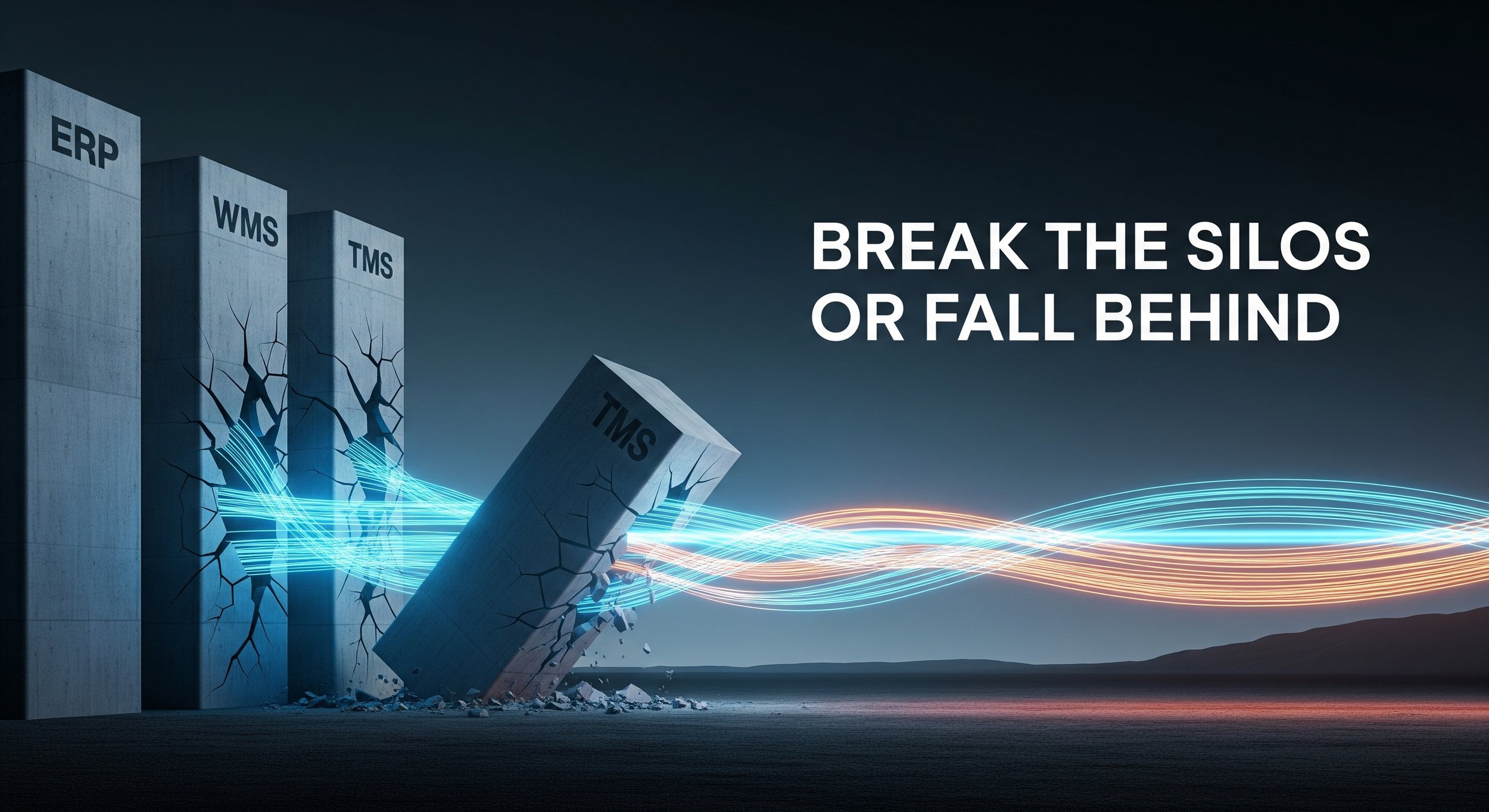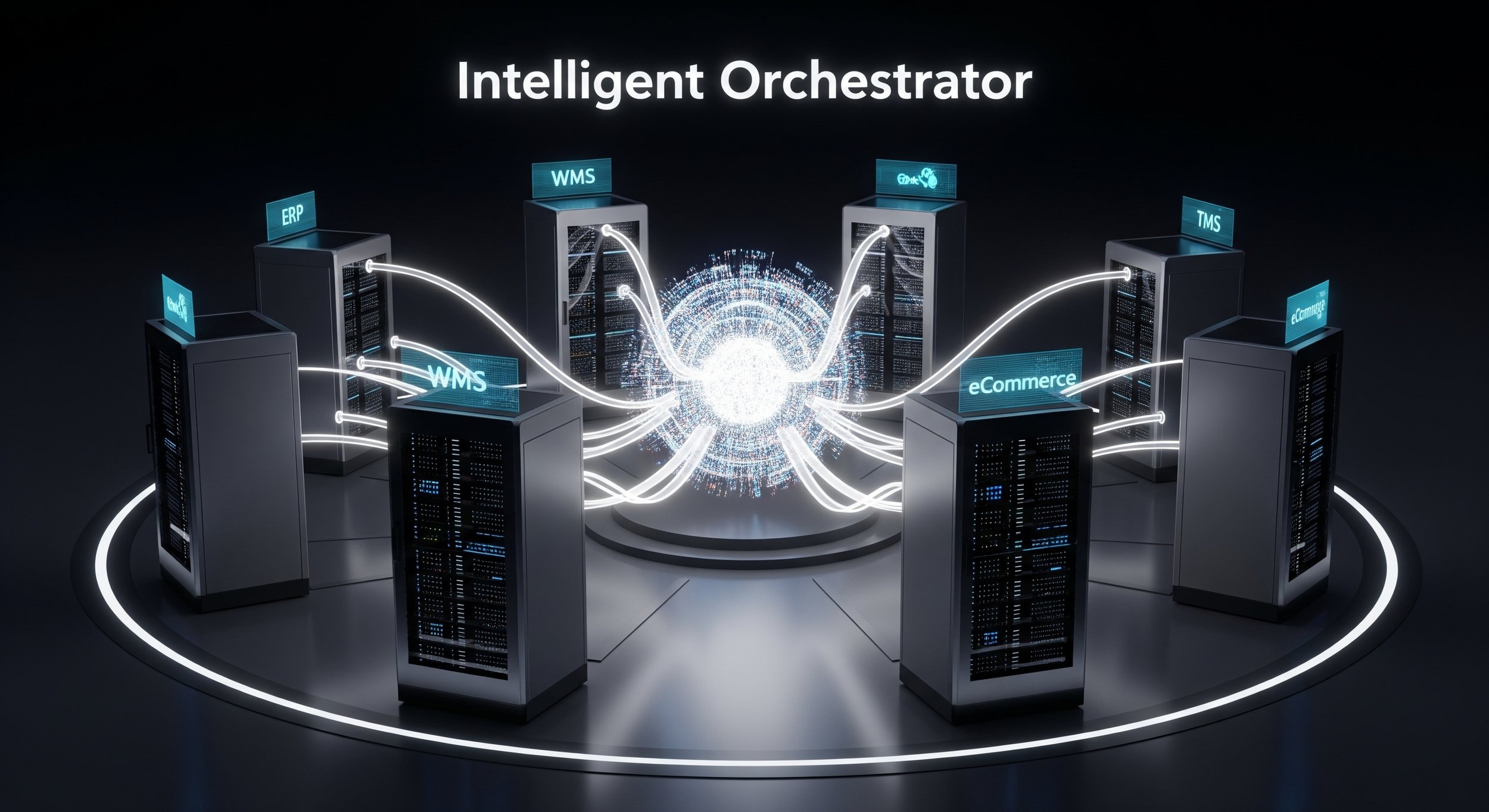Break the Silos or Fall Behind: Why Seamless Supply Chain Integration Is Now Mission Critical
Why Integration Can’t Wait
Global enterprises are pouring $5.2 trillion into digital transformation between 2022–2025. But here’s the problem: only 28% of supply chain organizations have achieved end-to-end system integration (Deloitte, 2024).
According to MHI, 60% of supply chain leaders say integration challenges are the #1 barrier to transformation. And Capgemini reports 85% now consider seamless integration “mission critical” for resilience, visibility, and speed.
Let’s be clear: disconnected systems aren’t just a technical burden—they’re a competitive liability.
The Reality: Fragmentation Is Holding You Hostage
Disconnected ERP, WMS, TMS, and eCommerce systems create friction at every level:
30% of IT time is wasted on manual reconciliation and patchwork integration—costing enterprises over $1.2 million per year (MuleSoft, 2024)
30% more operational disruptions and 20% higher exception costs plague companies with siloed systems (Gartner, 2024)
Nearly 75% of fulfillment errors trace back to disconnected platforms (Forrester, 2024)
Result? Slower responses, higher costs, and a churn-prone customer experience.
What Seamless Integration Looks Like—with xChangeFlow
xChangeFlow solves these issues at the root—by orchestrating data across systems with real-time intelligence.
With xChangeFlow, you get:
Unified ERP, WMS, TMS, and eCommerce integration through one intelligent layer
Event-driven architecture that reacts instantly to delays, disruptions, or inventory changes
AI-enhanced orchestration for process automation and latency reduction
What clients experience:
35% less manual process time
40% fewer data-related errors in the first quarter
60% faster time-to-insight with a unified data layer (IDC, 2024)
45% shorter response time for system incidents (Gartner, 2024)
Integration = Business Impact
When your systems are connected, your business becomes faster, more adaptive, and more profitable.
Up to 50% boost in order accuracy (ARC Advisory, 2024)
20–25% reduction in order-to-cash cycle time with ERP-logistics integration (McKinsey, 2024)
30% increase in inventory visibility
15–20% lower fulfillment costs and 25% SLA improvement (Accenture, 2024)
Real-world result:
A mid-sized distributor using xChangeFlow cut 85% of manual ERP-WMS reconciliation and freed up 20% of IT & ops capacity—in just 60 days.
The Cost of Waiting Keeps Rising
44% of IT leaders say poor integration is the #1 blocker to scaling AI and automation (PwC, 2024)
Businesses lose an average of 7% of revenue annually to disconnected systems (Forrester, 2024)
By 2026, 70% of supply chain orgs will invest in modern integration platforms (Gartner, 2025)
Future-Ready Supply Chains Are Built on Integration
The most successful supply chains today are real-time, connected, and adaptive.
🏆 Companies with integrated systems are:
2.5× more likely to exceed customer expectations
1.8× more likely to achieve above-average profitability (Capgemini, 2024)
📉 And by 2025, McKinsey forecasts that:
Integrated supply chains will respond 50% faster to disruptions
Launch digital commerce channels 40% more efficiently
With B2B digital commerce projected to reach $36.16 trillion by 2026, closing your integration gaps is no longer optional—it’s a mandate.
Expert Insight
“Integration is no longer a backend IT project—it’s the backbone of supply chain innovation and resilience.”
— Lisa Morales-Hellebo, Co-founder, The Worldwide Supply Chain Federation
Ready to Eliminate the Silos?
Let’s map out your integration strategy.
Book a free consultation with an xChangeFlow integration architect. We’ll assess your current tech stack and identify the fastest path to end-to-end system connectivity—with no rip-and-replace.
👉 Request Your Free Supply Chain Integration Strategy Session
💡 No obligation. No sales pitch. Just expert insight tailored to your systems and goals.
Sources
MHI Annual Industry Report, 2024
Deloitte Supply Chain Integration Benchmark, 2024
Capgemini Research Institute, 2024
MuleSoft Connectivity Benchmark, 2024
Gartner IT & Supply Chain Outlook, 2024
Forrester Future of Fulfillment Report, 2024
IDC Digital Decisioning Trends, 2024
ARC Advisory Group, 2024
McKinsey Global Supply Chain Insights, 2024–2025
Accenture Intelligent Operations Study, 2024
PwC Digital Operations Pulse, 2024
KPMG Global Supply Chain eCommerce Trends, 2024


